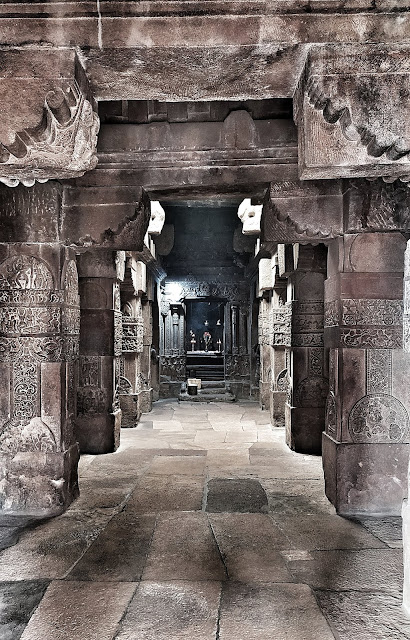We, humans, have a compulsion to tell stories. Across time, we have through whatever means we could muster, through whatever devices we could design, found ways to pass along these tales – these marks in time that endure our mortal selves. Some tellers trusted memory, others entrusted their tales to barks of birch and there were those who left their imprints on stone.
Visit the once-bustling capitals of Badami, Aihole, and Pattadakal in present-day Karnataka and you will see the stone sculptures, temples, and monuments telling their own stories which you can accept, add to and pass on to those who come after you.
In the hope that they will do the same.
Badami is a small town in northwestern Karnataka in India. It was the center of the Badami Chalukya Empire between the 6th and the 8th centuries. Today, Badami is famous for the four rock-cut temples that blend in seamlessly into its sandstone hills.
Badami was shortly known as Vatapi. As per our tour guide, the name “Badami” came into use when people started referring to the city by the color of the hills surrounding it.
The sandstone hills are colored almond-brown or the color of “badams” in Indian parlance. If you look at the picture below, you will know what I mean.
The greatness of Badami and its people’s creative genius is encapsulated in the astounding cave temples carved out of red sandstone rocks. There are temples that are built over a period of time; dedicated to Hindu deities as well as to Jain — a fine example of the syncretic culture that the kingdom fostered.
Contemporary Badami, with its dusty roads, haphazardly lined shops and unregulated traffic of smoke-spewing, overaged vehicles has the look and feel of a degenerated urban life, which, unfortunately, is the fate of most of our historic places. There is not even a proper signboard to show the way to the magnificent monument hidden behind this urban chaos.
Apart from the numbered caves, Badami is home to many lesser-known monuments and medieval-era temples. The most prominent among them is Bhutanatha Temple, facing Agasthya Lake.
Historians and archaeologists reckon that the three exquisitely planned and executed complexes followed one after the other. While Badami and Aihole bore the setting for formative stages in experimentation with cave-carving, the monuments at Pattadakal demonstrate the finale in the evolution of cave temples, art, and architecture.
On leaving Badami, one feels a sense of sadness as the town has abysmal facilities and attracts fewer tourists as the state government has failed to promote it adequately.
Read more at: https://www.deccanherald.com/sunday-herald/bewitching-badami-706850.html

































